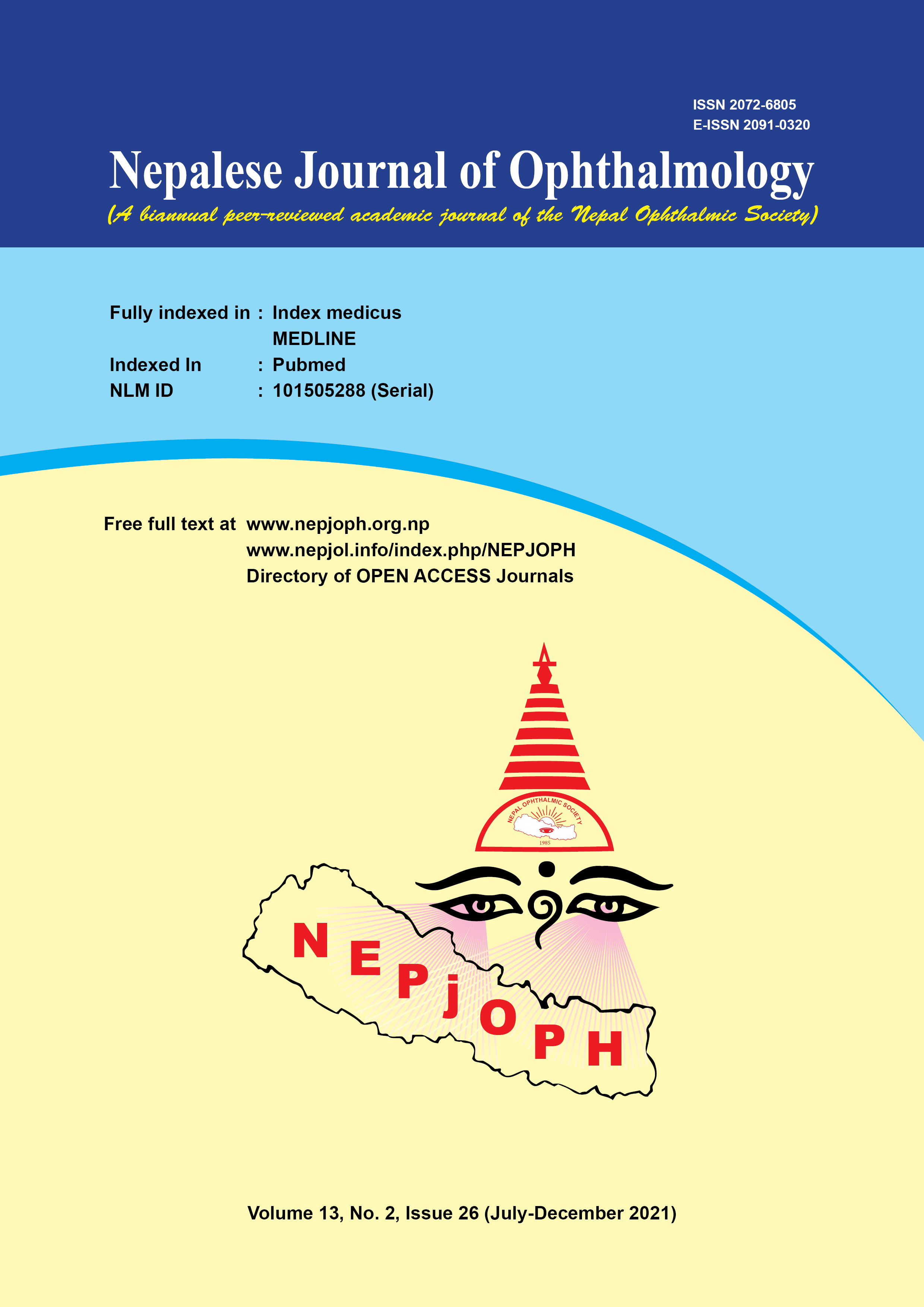Prevalence of Ocular Diseases in Human Donor Eyes in New Zealand: A Study Based on Clinical and Histological Imaging
DOI:
https://doi.org/10.3126/nepjoph.v13i2.30045Keywords:
Age related macular degeneration, Diabetic Retinopathy, Human donor tissues, PrevalenceAbstract
Introduction: Fundus pathology in donor eyes was correlated with cross-sectional Optical Coherence Tomography (OCT) images and histological assessment was performed to determine the prevalence of retinal diseases without the constraints imposed during in vivo clinical imaging.
Material and methods: A fundus camera and OCT imaging system was adapted to enable posterior segment imaging of the entire post-mortem human eye. Retinas from 59 donors (57 retina pairs and two single globes) were imaged in a seven-field imaging format and cross-sectional analysis was done using OCT. To confirm that the signs observed represented true disease incidence analysis of disease markers including gliosis (Glial Fibrillary Acidic Protein), hemichannel expression (Connexin43), Müller cell activation (vimentin) and choroidal endothelial cells (CD-31) and macrophages (CD-68 marker) was performed.
Results: Pathological signs were correlated with clinical diagnoses in eyes from 25 donors (donor ages 45-87 years) but lesions were also found in 23 eyes (donor ages 39- 83 years) with no previously reported clinical diagnosis. Retinas from six donors aged 21-89 years of age were unremarkable. Of all donors, five donors had signs of age related macular degeneration (AMD) and 14 had signs of diabetic retinopathy (DR). Their lesions correlated with OCT and histopathology showed signs of activated microglia, Müller cell hyper-reactivity, increased Cx43 expression and choroidal inflammation. These data indicate that with over 8% of donors showing signs of AMD and 24% of donors showing signs of DR the incidence of AMD may be 1.7 times higher and DR up to 1.6 times higher than clinically reported.
Conclusions: The detection of pathological signs characteristic of AMD and DR in donors suggests a higher prevalence of posterior segment abnormalities amongst New Zealanders donors than previously reported. A more detailed evaluation protocol of the posterior segment in patients will aid detection of lesions that are none the less pathological signs.
Downloads
Downloads
Published
How to Cite
Issue
Section
License
Copyright (c) 2021 Nepalese Journal of Ophthalmology

This work is licensed under a Creative Commons Attribution-NonCommercial-NoDerivatives 4.0 International License.
This license enables reusers to copy and distribute the material in any medium or format in unadapted form only, for noncommercial purposes only, and only so long as attribution is given to the creator.




